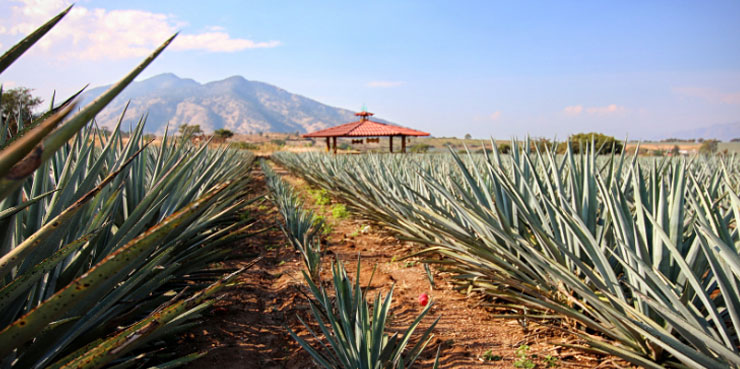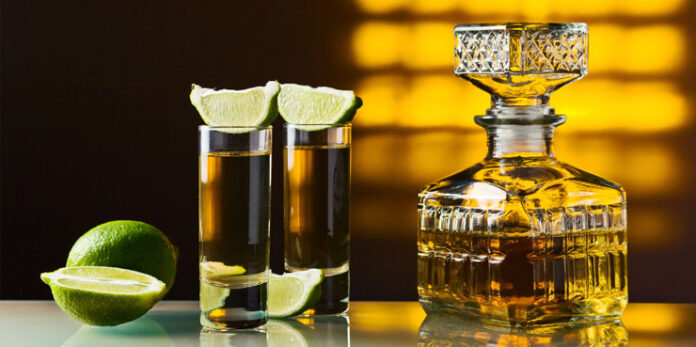Tequila has been an industry darling in recent time. Double-digit growth in this category has helped lead the overall spirits market higher for years now. How much longer can the boom times continue for agave spirits?
One possible answer: Look at whiskey. This other trendy category exploded in popularity years before tequila’s rapid rise. Tequila has always seemed a few years behind the trajectory of brown spirits, as more bourbon drinkers discovered that they also enjoyed the sweet profile and similar complexities of agave alternatives.
Whiskey has now cooled off. Its own annual double-digit gains have come down, approaching if not reaching the respectable single digits. After the combined tequila and mezcal category grew 17% in 2022, according to the Distilled Spirits Council of the United States, will these spirits follow bourbon lower? Depends on whom you ask.

“The tequila market is stronger than ever,” says Mike Moreno, owner of Moreno’s Liquors in Chicago, a Beverage Dynamics Top 100 Retailer, and the largest vendor of agave spirits in America. “Tequila sales are up 20%. Cask strength tequila sales are up 25%. In 2023, tequila was supposed to outpace vodka by the end of the year. Instead, it ended up outperforming vodka by the end of Q2. That’s how quickly it’s growing.”
From the standpoint of the middle tier, the outlook is also positive but more modest.
“As a category, growth has slowed pretty substantially over the last 12 months as the overall spirits industry has also seen some softness,” says Zachary Poelma, Southern Glazer’s Wine & Spirits SVP supplier strategy & insights. “Tequila continues to outperform, and we believe will do so in 2024, but not at the same rate we saw in 2022 or 2023.”
“We expect tequila to grow modestly in 2024 in the low-single digit range, which we think still outpaces overall spirits when you exclude RTDs,” he adds. “The value price tier trailed in performance versus the rest of the category in 2023, and we think this is something that continues into 2024.”
Preliminary data from The Beverage Information Group, the data partner of Beverage Dynamics magazine, shows tequila at between 5-7% growth last year. Category leaders Cuervo and Patron each shrunk around 2% – further evidence of leveling off.
Tequila Trends in 2024
Which is all to say that while the numbers may not jump off the charts anymore, tequila will remain a growth driver this year. So what can we expect from this category in terms of trends?
Premiumization has been the dominant story in tequila (and much of the alcohol industry) for the past decade. While customers will continue reaching for top-shelf bottles, Moreno does see some pullback. Why? Macro reasons, coupled with a touch of category overexpansion.
“Economically, many consumers feel iffy or weary about the potential for a market crash in 2024,” Moreno says. “I have noticed that more consumers have been buying down. Not the cheap stuff. But all of a sudden, we have all these extra anejos, anejos and even reposados priced between $200 and $400. We’ve never seen those prices before. I think the customers are more comfortable with the $50 to $100 price point.”

Perhaps the two biggest trends in tequila today are celebrity-launched brands and “additive free” products. Combining these two elements is Santo Tequila, from Sammy Hagar and Guy Fieri.
“There can be a backlash to celebrity tequila brands,” says Dan Butkus, Santo president and CEO. “Some [celebrities] don’t even drink the tequila first and put out products filled with additives. We had considered shying away from the celebrity focus, but felt that our celebrities truly engaged with the brand.”
It helps when the team is Hagar, a pioneer of celebrity alcohol brands, and Fieri, who has launched a number of successful food and beverage brands himself. Authenticity is everything when tying a product to a public star. The story and quality must match the fame.
For instance: Santo focuses on additive free. The Tequila Regulatory Council, the category’s governing body, allows 1% of any agave spirit to consist of additives, without any notice on the bottle’s label. Many brands that use 0% additives are now advertising this fact prominently on their packaging and marketing.
“You have a greater number of people now looking for true tequila taste,” Butkus explains. “Additive free will become the dominant subcategory.”
This is a turn from some practices during earlier stages of the ongoing tequila boom.
“When we were having the agave shortage problems, people were sourcing younger and younger agave products,” Butkus says. “The cost of agave was also going up. As tequila was booming, more brands, especially the larger ones, were forced to use younger agaves. That meant they had to use lots of additives to overcome underripe agaves and other flaws in the liquid.”
Additive free tequila and mezcal also ties into the “healthier for you” lifestyle currently transcending all food and beverage categories. So says Enrique Cobos, beverage director for the Chicago-based restaurant Moe’s Cantina, which has two locations in the city.
“People appreciate that mezcal is made organically and artisanally,” he says. “That’s why I feel that additive free will be a strong trend. Personally, I find myself getting more and more into products that are additive free and made in smaller batches. More people will soon realize that additive free is the way to go.”
“However, you can talk about the production process all day, but in the end, it all comes down to flavor,” he adds. “You don’t have to be an expert to appreciate something that tastes good.”
Elsewhere on Moe’s backbar, Cobos sees cristalino tequilas – anejos filtered until completely clear – staying strong.

“More and more brands are stepping up with these products,” he observes. “I don’t think that’s going to stop.”
However, he points out that some consumers enjoy cristalinos because, “more people don’t know that much about tequila. Filtering a product makes it easier to drink. Add in a fancy bottle, and people fall for it. It doesn’t mean that cristalino is for everyone, but the more traditionalist tequila and mezcal drinkers, the aficionados, they don’t like cristalino.”
“Sometimes with cristalino, I think they’re trying to create a category that’s not there,” he adds.
While Moe’s does sell a celebrity tequila flight (George Clooney’s Casamigos Blanco, Kendal Jenner’s 818 Reposado and Kevin Hart’s Gran Coramino Anejo for $50), Cobos offers a broad caveat for these kinds of brands.
“Just because you can do it doesn’t mean it’s going to work,” Cobos says. “There’s a point where people have had enough. They will ask for more quality for their money.”
Cobos believes that tequila bars will remain popular.
“Tequila is great, because you can build a business around it,” he says. “In general, there’s not too much change going on in tequila. The category just doesn’t change that much. That’s why you have so many competing brands trying to come out with something new these days.”
However, “it’s key not to have too many brands,” on the backbar, he adds. “You have to keep it honest. I recommend having 30 brands and training your staff so that they can really talk about all of them.”
If you do want more than 30 brands on your backbar, a wave of innovation within tequila means more product launches ahead.
“Finishing tequila in barrels that other products have been aged in – such as port or even bourbon – continues to grow in popularity,” says Poelma, of Southern Glazer’s. “We think we’ll continue to see more innovation in this area from tequila brands in 2024.”
“We are also seeing tequila continue to grow on-premise, with cocktail options that stretch beyond the traditional Margarita,” Poelma adds. “Along with mixologists including tequila in more drink menu options, we are even starting to see accounts selling the Sparkling Margarita. Over the last couple of years, we’ve seen consumers become more interested in the different ways tequila can be used, and we don’t expect that to change in 2024.”

Agave Shortage Over?
Even before sustainable, natural, eco-conscious alcohol products became trendy, a common talking point in tequila was the risk of an agave shortage. After all, as the category experienced exponential growth, could farmers keep up with crops that take 7-10 years to reach maturity?
Moreno thinks this tide has turned.
“We went through a shortage not long ago, but right now, we’re on the up and up,” he says. “There was such a rush from the farmers to plant as much as possible. The agave market is similar to Wall Street: there’s ups and downs, but it levels out. I’m very confident to say that we’re approaching a surplus now.”
“We should start seeing more of our favorite brands soon,” he adds. “If anything, the glass shortage is more concerning for tequila. They’re still having issues with that down in Mexico.
Agreeing with Moreno is Poelma of Southern Glazer’s. “While tequila has grown significantly in popularity, we are not concerned about agave shortages at this time,” he says. “The price of agave has fallen by more than 50% from the high during the pandemic. And as demand has slowed from the high double-digit growth in 2021 and 2022, we expect sufficient availability of agave for the next few years to supply current trends.”









